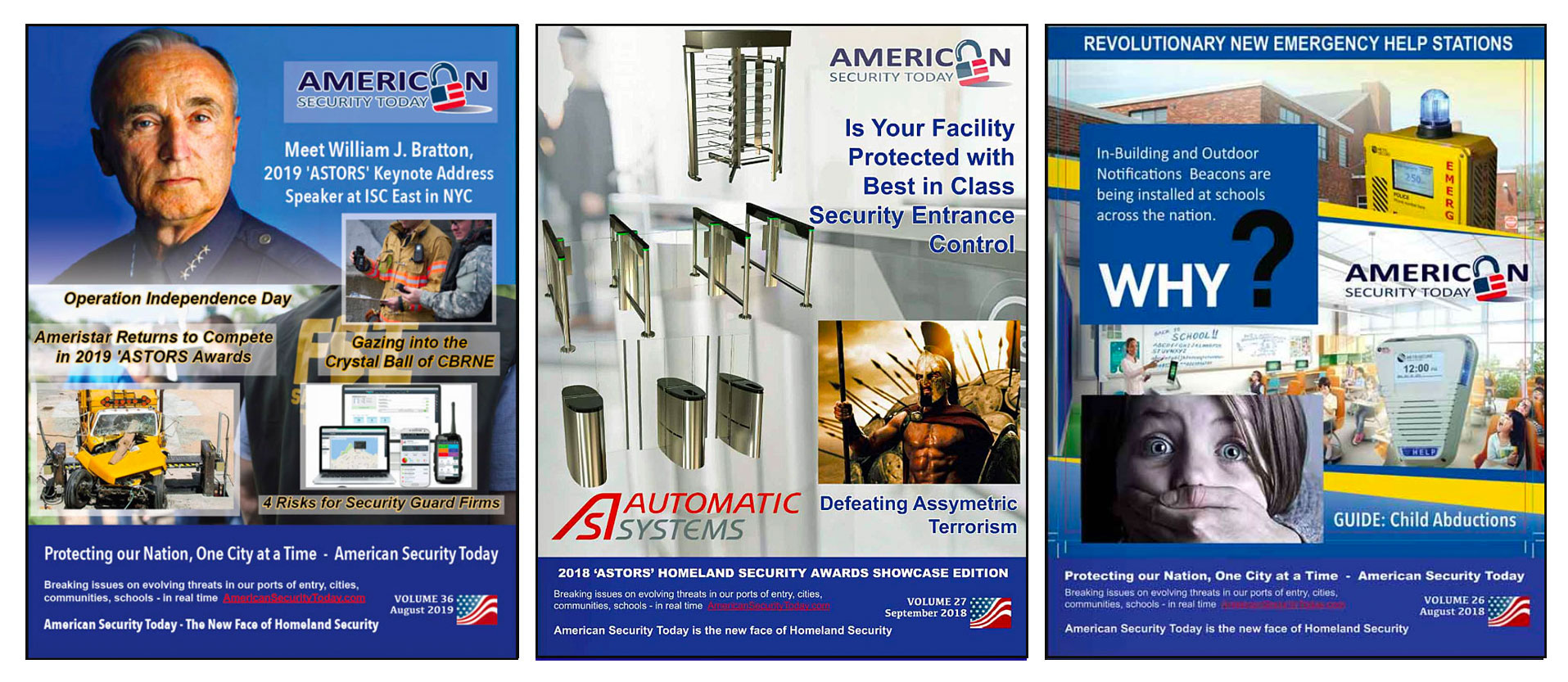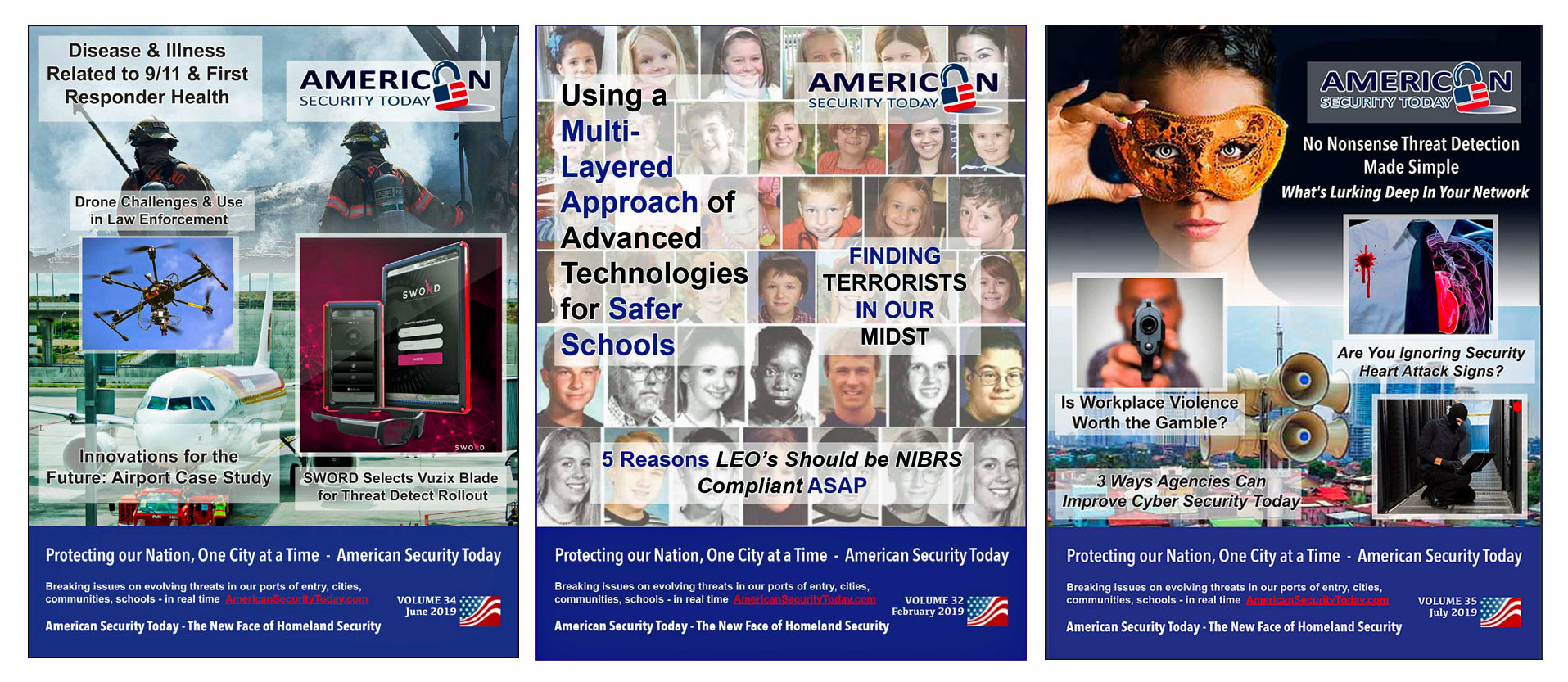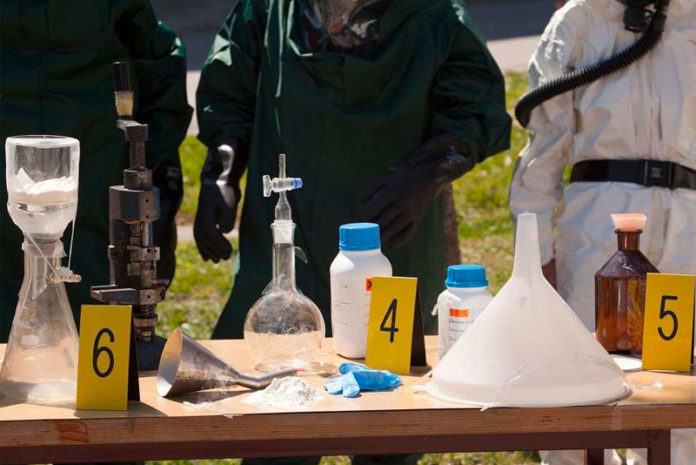
Imagine that in the course of an investigation, law enforcement officers suspect the presence of a clandestine laboratory processing illicit drugs.
Upon the execution of a search warrant, these officers discover a clandestine laboratory hidden in the basement, full of bottles and containers with chemicals.
For personal and public safety, as well as potential criminal prosecution, the officers must be able to identify both the illicit substances and all substances used to make them.
For officers who likely are not chemists, how can they do this quickly and safely?
What if they could enter the list of chemicals in a search engine or a special database and discover that these chemicals are the reagents or ingredients for the production of a toxic gas?
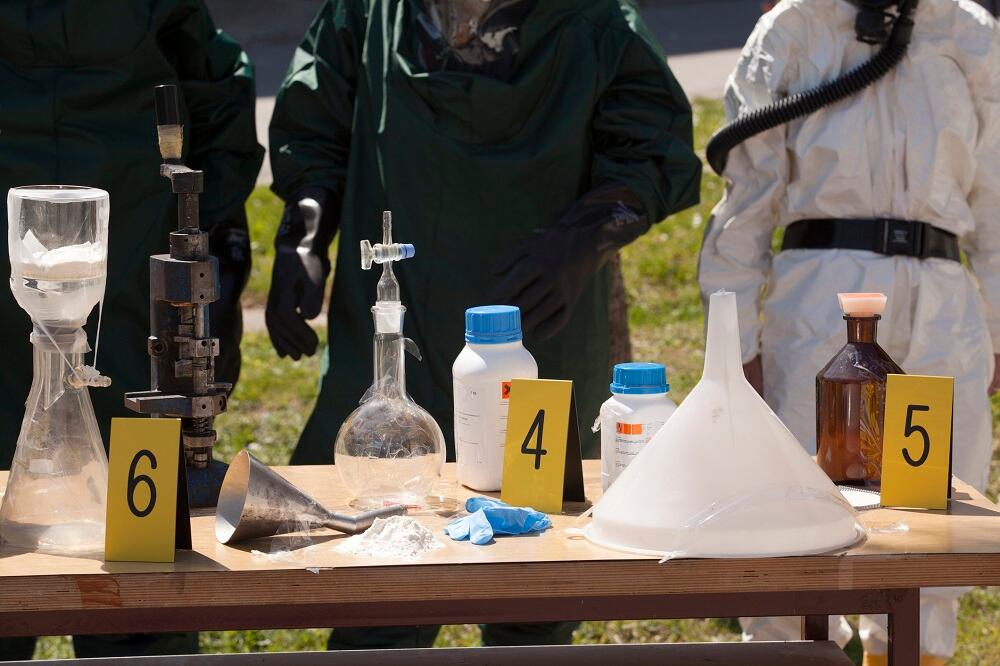
Scenarios such as these occur daily and demonstrate the importance of access to reliable chemical information for solving crimes and preventing violence.
Illicit chemistry information exists in the form of a Chemical Agents Reactions Database (CARD) was developed by expert chemists from the Department of Homeland Security (DHS) Science and Technology Directorate (S&T) Chemical Security Analysis Center (CSAC), and is readily available to law enforcement personnel even if they are on the scene!
“CARD is a centralized location of chemical information for threat materials that can be used simultaneously from multiple locations,” explains Dr. David Morton, Senior Chemist at CSAC, who leads the CARD project.
“CARD is one of the tools for assisting federal law enforcement with interdiction, prosecution, and reduction of drug proliferation, including law enforcement like the U.S. Customs and Border Protection (CBP), U.S. Coast Guard, Immigration and Customs Enforcement, and the U.S. Secret Service.”
What is CARD and how does it work?
CARD, a chemical synthesis and chemical informatics centric data system (e.g. boiling point, melting point, toxicity, or spectroscopic information) containing both unclassified and classified data, is accessible from a classified website maintained on a server hosted by the Department of Defense.
The website is available to appropriately cleared personnel from DHS, Department of Justice (e.g. FBI), other United States Government interagency offices, and state and local agencies, and provides information on how chemicals of interest could be produced.
“There is a detailed description of how each chemical is prepared to include information relevant to each step, the reagents and reactants that are needed and the conditions necessary for the reactions to take place, such as time, temperature, mixing—like a recipe,” added Morton.

“If law enforcement were to discover a table full of labeled chemicals in a clandestine laboratory, they would put these names as a list in CARD to find out what the suspects are making – illicit drugs, poisons, or warfare agents.”
Also, CARD can be used the other way around.
In the event police find an illicit drug or a warfare agent, they can search in the website to see what chemicals can be used to make it.
For example, if police capture a suspect with a vial of sarin gas (a nerve agent that can kill in minutes after inhalation), they can use CARD to determine which chemicals are used to make it. Police can then search the suspect’s illicit lab for those chemicals and obtain further evidence of wrongdoing.
“Thiodiglycol can be used to make mustard gas. So, if I saw someone with a lot of this, I might be concerned,” Morton said.
“CARD is an important tool to provide law enforcement with clues for different types of illegal activity for either possessing an illegal chemical or for actively making a lot of it.”
CARD also shows the molecular structure of chemicals, the ways they are produced and used, and their physical, chemical, and toxicological properties.
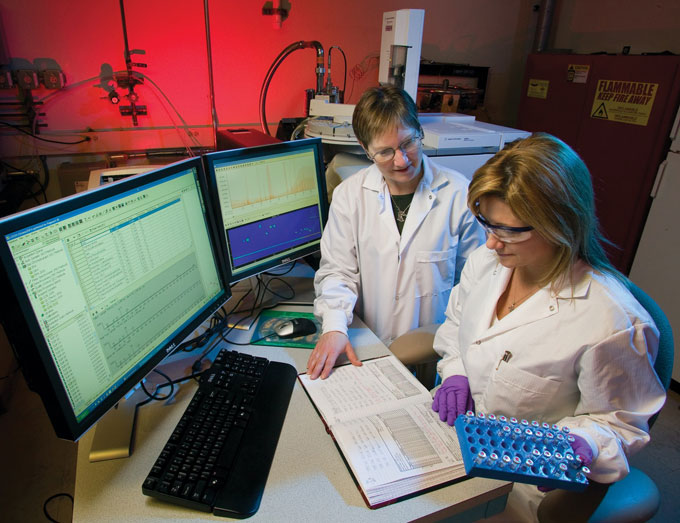
The database is continuously growing, with CARD currently containing approximately 1,000 chemicals of interest and 5,000 reagent chemicals used in the chemical reactions that produce illicit chemicals.
These chemical reactions are supported in CARD by peer review journal articles.
CARD is used on a daily basis by different federal agencies. For example, CBP has been using it for tracking important chemicals coming into the U.S. from countries of interest.
“Users are very important for the continuous growth and improvement of CARD as they provide feedback and suggest more chemicals of interest to be added,” Morton said.
Among CARD’s key features are its more than 2,000 chemical synthetic methods (gathered from the military, government and industry) for the synthesis and decomposition of the chemicals of interest.
Synthesis is how a chemical is made, and decomposition is the breakdown of a chemical during decontamination and cleaning of a contaminated area.
Another feature is chemical specific information on acute toxicity, which is important to inform responders and law enforcement of the health consequences after human or animal exposure.
Toxicity information is complemented with corresponding medical countermeasures, which uses data from CSAC’s Chemical Risk Assessments.
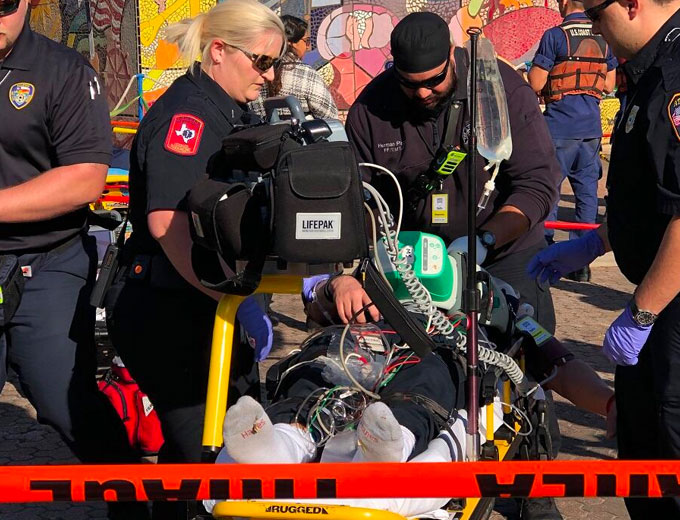
In CARD, the physiochemical properties—14 unique properties per chemical including melting point, boiling point, heat vaporization, density, solubility in water and more—are available for several hundred chemicals of interest and more are being added.
Chemical compounds can be searched by chemical names, synonyms, molecular formula or weight.
These features are useful to investigators to find information on suspect chemicals, understand their properties and the dangers they pose, what medical treatments are recommended, and how to render the chemicals safe.
Centralizing Chemical Data for Greater Accessibility
“In the past, it was difficult to get chemical information,” Morton said.
“We had information stored in one computer, on paper, in disparate forms, or we typically had only one copy of something needed for reference. And if several people needed this particular resource, they had to wait until another individual completed their work with it.”
CARD was created to improve the work of DHS agencies—to have an electronically-centered information system for everyone to be able to use the same information simultaneously. Once developed, the system was offered to anyone with security clearance.

S&T identified the need for CARD in 2008 and CSAC launched the first version in late 2009, and the first major overhaul of the platform came in 2018, when S&T collaborated with the FBI’s Chemical Forensics Program.
The FBI wanted to store their chemical data together as a taxonomy. CSAC decided to rework CARD in a similar way – putting all the chemicals of the same chemical class together in the same taxonomy while separating chemicals from several S&T programs into their respective taxonomies.
“We are responsive to anybody who uses the system. CARD has been evolving with input from many reviewers,” Morton said.
The Future of CARD
Although the latest version of CARD was just updated in the second half of fiscal year 2020.
“Every two quarters, there is a regular update to CARD” Morton said. “Additionally, we continuously update as critical information is made available. Sometimes things change weekly.”
The next version will target an audience of broader technical background.

CSAC also plans to offer a limited, unclassified version of CARD in the future. Because the platform itself is not classified, Morton and his team will launch a version that contains only unclassified open source information on an unclassified government server, opening CARD to an even wider audience.
“We want to have an unclassified platform so that people within DHS subdivisions, contractors and interagency can use it,” Morton said.
“This is about serving a broad spectrum of National needs, and not just our own. So, the more users CARD has, the more feedback we will get, the better the system will become.”
Established in 2006, the Department of Homeland Security (DHS) Science and Technology Directorate’s Chemical Security Analysis Center (CSAC) is the nation’s only federal studies, analysis and knowledge management center for assessing the threat and hazards associated with an accidental or intentional large-scale chemical release event or attack in the United States.
Located in the Edgewood Area of Aberdeen Proving Ground, MD, S&T CSAC fosters research collaborations with the U.S. Army Combat Capabilities Development Command Chemical Biological Center, Department of Defense Joint Program Executive Office for Chemical, Biological, Radiological, and Nuclear Defense, the U.S. Army Medical Research Institute for Chemical Defense, and the U.S. Army Public Health Center.
The focus of S&T CSAC is understanding and mitigating toxic chemical threats and hazardous chemical processes. S&T CSAC’s core capabilities include:
-
Chemical Exposure Risk and Consequence Modeling
-
Analytical Chemistry
-
Chemical Toxicology
-
Synthetic Chemistry
-
Chemical Informatics
S&T CSAC possesses an in-depth understanding of the science associated with identifying risks and vulnerabilities to chemical terrorism.
For more information on the CARD or if you would like a demonstration, please contact Dr. David Morton at David.Morton@ST.DHS.GOV.
DHS S&T Directorate Recognized for Excellence in the 2020 ‘ASTORS’ Awards
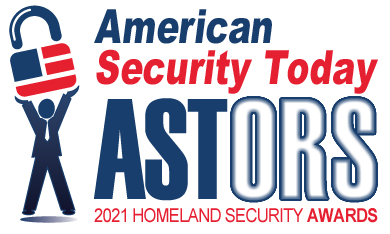 American Security Today’s ‘ASTORS’ Homeland Security Awards program is entering its Sixth Year and continues to recognize the Outstanding Innovations of top firms and agencies in the Homeland Security and Public Safety fields.
American Security Today’s ‘ASTORS’ Homeland Security Awards program is entering its Sixth Year and continues to recognize the Outstanding Innovations of top firms and agencies in the Homeland Security and Public Safety fields.
The Annual ‘ASTORS’ Awards is the preeminent U.S. Homeland Security Awards Program highlighting the most cutting-edge and forward-thinking security solutions coming onto the market today, to ensure our readers have the information they need to stay ahead of the competition, and keep our Nation safe – one facility, street, and city at a time.
90% of ‘ASTORS’ Award Winners return to compete in the Annual ‘ASTORS‘ Homeland Security Awards Program, and 100% of ‘ASTORS’ Sponsors have returned year to year to reap the benefits of their participation in the industry’s largest and most comprehensive Annual Awards Program.
2020 was a very challenging year for everyone due to the COVID-19 pandemic and the much heralded AST ‘ASTORS’ Awards Winners Presentations and exclusive Luncheon at the Jacob Javits Center in NYC was canceled and rescheduled for 2021 due to the virus.

However, the 2020 ‘ASTORS’ Homeland Security Awards Program was again a huge success and many new categories were added including a section for COVID-19 Detection and Innovation.
Department of Homeland Security (DHS) Science and Technology (S&T) Directorate

Excellence in Homeland Security
-
The COVID-19 pandemic is a global threat with life and death consequences, the enormity of which many of us have never seen before.
-
It is also a scientific challenge in need of innovative solutions and S&T is using every tool at its disposal to join the fight; including harnessing the knowledge of it’s experts on technology deployments, international collaboration, scientific breakthroughs, and support for America’s frontline workers.
-
S&T has focused its efforts on laboratory research and providing valuable resources to inform the broader response community and help keep front line responders safe.
-
Highlights of S&T’s response efforts can be found in our Battling the Invisible Enemy report.
DHS S&T Chemical Security Analysis Center (CSAC)

Excellence in Homeland Security
-
CARD, a chemical synthesis and chemical informatics centric data system (e.g. boiling point, melting point, toxicity, or spectroscopic information) containing both unclassified and classified data, is accessible from a classified website maintained on a server hosted by the Department of Defense.
-
The website is available to appropriately cleared personnel from DHS, Department of Justice (e.g. FBI), other United States Government interagency offices, and state and local agencies, and provides information on how chemicals of interest could be produced.
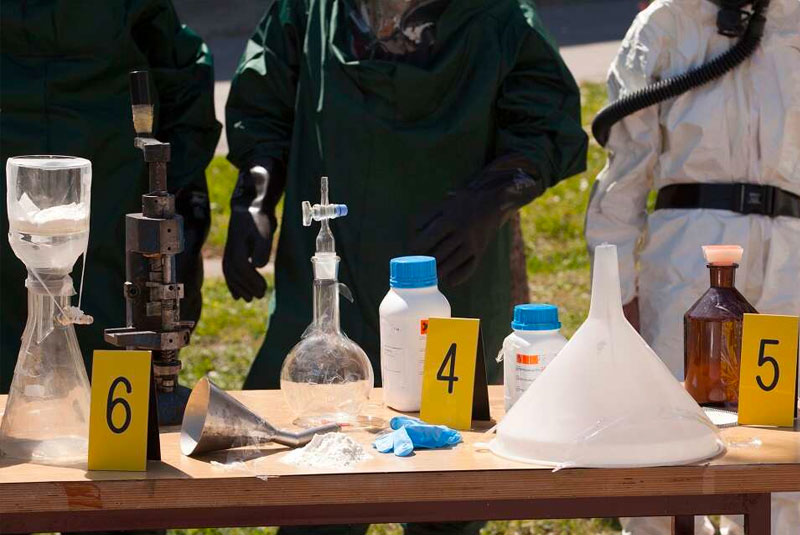
-
There is a detailed description of how each chemical is prepared to include information relevant to each step, the reagents and reactants that are needed and the conditions necessary for the reactions to take place, such as time, temperature, mixing—like a recipe.
-
If law enforcement were to discover a table full of labeled chemicals in a clandestine laboratory, they would put these names as a list in CARD to find out what the suspects are making – illicit drugs, poisons, or warfare agents.
-
CARD can be used the other way around. If police find an illicit drug or a warfare agent, they can search in the website to see what chemicals can be used to make it.
-
For example, if police capture a suspect with a vial of sarin gas (a nerve agent that can kill in minutes after inhalation), they can use CARD to determine which chemicals are used to make it. Police can then search the suspect’s illicit lab for those chemicals and obtain further evidence of wrongdoing.
DHS S&T National Urban Security Technology Laboratory (NUSTL)

Excellence in Public Safety
-
-
Hoist Rescue Gloves for Aerial Rescue
-
-
Rescue helicopter hoist operators need gloves to protect the hand that guides the hoist cable during rescue descents and ascents, using a significant amount of force to mitigate the cable swinging for situations from hurricane evacuations and dive rescues to rescuing stranded hikers on a mountain side, missions vary and no two are ever alike.
-
A partnership between S&T and Higher Dimension Materials, Inc. (HDM) resulted in an enhanced rescue hoist glove with increased flexibility, durability, and dexterity.
-
The glove design uses cushioning materials offering protection to the thumb crotch (purlicue) area, the index and little finger, and a leather guard to alleviate inconsistent glove performance when wet,” said Jones-Holt.
(See the enhanced Hoist Rescue Glove in action. Courtesy of DHS Science and Technology Directorate and YouTube.)
Department of Homeland Security (DHS) Science and Technology (S&T) Directorate

Excellence in Homeland Security
-
The Slash CameraPole is a self-triggering platform with wireless data retrieval to detect and give warning of suspicious activities at the U.S.-Canada border, specifically a cleared stretch of land at the border that is approximately 20-feet wide, 1,349 miles long, and is referred to as the “Slash.”

-
This man-made, treeless zone is mandated by the International Boundary Commission and presents a formidable surveillance challenge, against such threats as illegal crossings, drug and illegal contraband smuggling and human trafficking.
-
Using the Slash CameraPole system, Border Patrol has been able to establish an advanced border surveillance capability where none existed before.
-
Partnering with MIT Lincoln Laboratory and several private companies to create the Slash CameraPole with numerous ingenious features, such as solar panels and a back-up fuel cell system make it independent of the power grid, multiple infrared cameras (two long-range, one foreground, and one base imager with a fisheye lens) mean it doesn’t miss a thing.
-
An in-ground cement foundation and electrical enclosure ensures it can withstand brutal winter conditions. Should its unobtrusive appearance manage to draw the attention of would-be vandals, the Slash CameraPole is resistant to small arms fire and other tampering.
-
The Slash CameraPole also employs advanced motion detection algorithms and automated alerts designed to improve classification of targets and lower the chance of false alarms from factors such as wild animals or vegetation moving in the wind.
-
*DHS S&T Programs have now been recognized in their Fifth Annual ‘ASTORS’ Awards Program.
The 2020 ‘ASTORS’ Awards Program was sponsored by ATI Systems, Attivo Networks, Automatic Systems, Desktop Alert, X.Labs and Reed Exhibitions, every one a returning Sponsor from 2020, 2019 and More.
Nominations are now being accepted for the 2021 ‘ASTORS’ Homeland Security Awards at https://americansecuritytoday.com/ast-awards/.
Comprehensive List of Categories Include:
| Access Control/ Identification | Personal/Protective Equipment | Law Enforcement Counter Terrorism |
| Perimeter Barrier/ Deterrent System | Interagency Interdiction Operation | Cloud Computing/Storage Solution |
| Facial/IRIS Recognition | Body Worn Video Product | Cyber Security |
| Video Surveillance/VMS | Mobile Technology | Anti-Malware |
| Audio Analytics | Disaster Preparedness | ID Management |
| Thermal/Infrared Camera | Mass Notification System | Fire & Safety |
| Metal/Weapon Detection | Rescue Operations | Critical Infrastructure |
| License Plate Recognition | Detection Products | And Many Others! |
| COVID Innovations | And Many Others! |
Don’t see a Direct Hit for your Product, Agency or Organization?

With the unprecedented occurrence of the COVID-19 pandemic, the focus of the safety and security industries has realized the need to increase innovations to address the daily growing challenges.
As such AST aims to make sure these firms and professionals are reflected in the 2021 ‘ASTORS’ Awards Program, so we’d like to encourage you to submit appropriate categories recommendations and include COVID-19 Frontline Professionals in your Nominations to see that these Professionals, Facilities, and Vendors receive the Recognition they Deserve!
Submit your category recommendation for consideration to Michael Madsen, AST Publisher at: mmadsen@americansecuritytoday.com.
Why American Security Today?
The traditional security marketplace has long been covered by a host of publications putting forward the old school basics to what is Today – a fast changing security landscape.
The traditional security marketplace has long been covered by a host of publications putting forward the old school basics to what is Today – a fast changing security landscape.
American Security Today is uniquely focused on the broader Homeland Security & Public Safety marketplace with over 75,000 readers at the Federal, State and local levels of government as well as firms allied to government.
American Security Today brings forward a fresh compelling look and read with our customized digital publications that hold readers eyes throughout the story with cutting edge editorial that provides solutions to their challenges.
Harness the Power of the Web – with our 100% Mobile Friendly Publications

The AST Digital Publications is distributed to over 75,000 qualified government and homeland security professionals in federal, state and local levels.
‘PROTECTING OUR NATION, ONE CITY AT A TIME’
AST Reaches both Private & Public Experts, essential to meeting these new challenges.
Today’s new generation of public safety and security experts need real-time knowledge to deal with domestic and international terrorism, lone wolf attacks, unprecedented urban violence, shifts in society, culture and media bias – making it increasingly difficult for Homeland Security, Law Enforcement, First Responders, Military and Private Security Professionals to implement coordinated security measures to ensure national security and improve public safety.
These experts are from Government at the federal, state and local level as well as from private firms allied to government.
AST provides a full plate of topics in our AST Monthly Magazine Editions, AST Website and AST Daily News Alerts, covering 23 Vital Sectors such as Access Control, Perimeter Protection, Video Surveillance/Analytics, Airport Security, Border Security, CBRNE Detection, Border Security, Ports, Cybersecurity, Networking Security, Encryption, Law Enforcement, First Responders, Campus Security, Security Services, Corporate Facilities, and Emergency Response among others.
AST has Expanded readership into integral Critical Infrastructure audiences such as Protection of Nuclear Facilities, Water Plants & Dams, Bridges & Tunnels, and other potential targets of terrorism.
Other areas of concern include Transportation Hubs, Public Assemblies, Government Facilities, Sporting & Concert Stadiums, our Nation’s Schools & Universities, and Commercial Business Destinations – all enticing targets due to the large number of persons and resources clustered together.
To learn more about the 2020 ‘ASTORS’ Homeland Security Award Winners solutions, Check Out the New 2020 ‘ASTORS’ CHAMPIONS Edition Fully Interactive Magazine – the Best Products of 2020 ‘A Year in Review’.
The Annual CHAMPIONS edition includes a review of the ‘ASTORS’ Award Winning products and programs, highlighting key details on many of the winning firms products and services, includes video interviews and more.
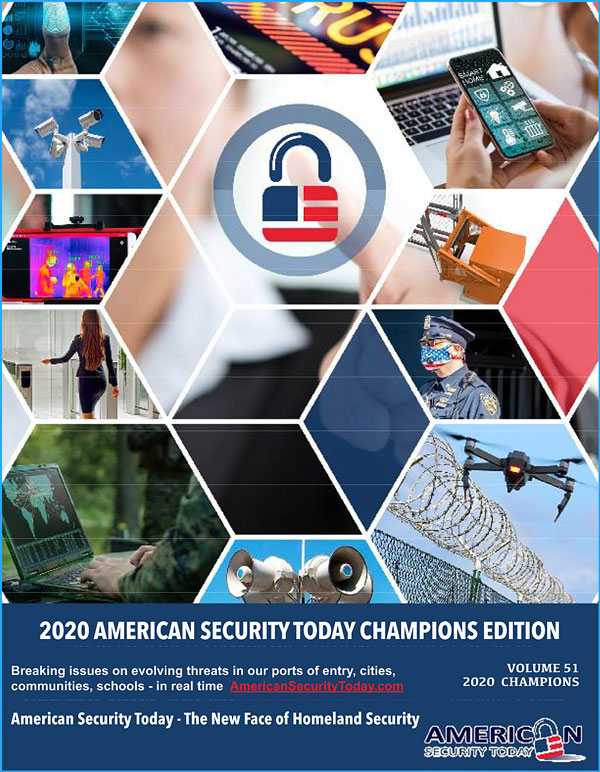 It is your Go-To source throughout the year for ‘The Best of 2020 Products and Services‘ endorsed by American Security Today, and can satisfy your agency’s and organization’s most pressing Homeland Security and Public Safety needs.
It is your Go-To source throughout the year for ‘The Best of 2020 Products and Services‘ endorsed by American Security Today, and can satisfy your agency’s and organization’s most pressing Homeland Security and Public Safety needs.
From Physical Security (Access Control, Critical Infrastructure, Perimeter Protection and Video Surveillance Cameras and Video Management Systems), to IT Security (Cybersecurity, Encryption, Data Storage, Anti-Malware and Networking Security – Just to name a few), the 2020 ‘ASTORS’ CHAMPIONS EDITION has what you need to Detect, Delay, Respond to, and Mitigate today’s real-time threats in our constantly evolving security landscape.
It also includes featured guest editorial pieces from some of the security industry’s most respected leaders, and recognized firms in the 2020 ‘ASTORS’ Awards Program.
-
For a complete list of 2020 ‘ASTORS’ Award Winners, click here.
For more information on All Things American Security Today, and the 2021 ‘ASTORS’ Awards Program, please contact Michael Madsen, AST Publisher at mmadsen@americansecuritytoday.com.
AST strives to meet a 3 STAR trustworthiness rating, based on the following criteria:
- Provides named sources
- Reported by more than one notable outlet
- Includes supporting video, direct statements, or photos
















